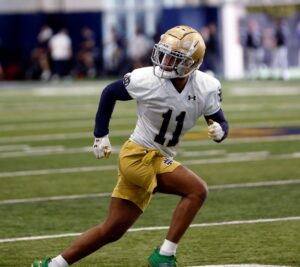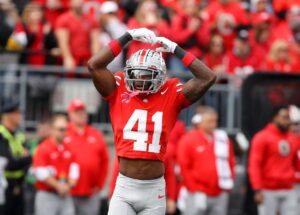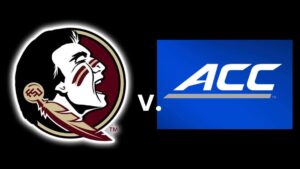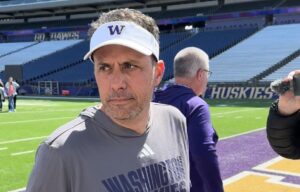The landscape of sports for 2020 will undoubtedly be the most perplexing that we’ve seen in our lifetime. And, College Football is at the forefront of this bewildering time. Many questions have been answered with the PAC 12, SEC, and Big 10 electing for a conference only slate. Comparatively, the ACC has added Notre Dame as a one-year membership and is allowing one non-conference home state game. That leaves the Big 12 as the only Power Five conference yet to make their intentions known. Even with logistical challenges, a college football bubble could help maintain an uninterrupted season.
However, with the current plan, some questions still remain. If college football experiences an outbreak, could the season be delayed? Is a Spring football season achievable? Will fans be allowed in the stadiums? Sports is a copycat world. Would it be possible for college football to implement a bubble in 2020? We’ll look at some of the logistics around how this could possibly work similarly to the NBA and NHL.
The College Football Bubble
The NBA has been successful thus far at incorporating the bubble in a short period and how successful they continue to be could be a blueprint for college football. The logistics would look much different on a college football map due to the number of teams, players, support staff involved in such an undertaking. Now, let’s dig into some of the specifics around testing, protocols, leaving the bubble, academics, schedule, and fans.
Testing
Major League Baseball will tell you how important it is for complacency in testing to not occur. For this to work testing early and often is not only essential, but it will also be required. Upon arrival at each bubble, each player, coach, and staff member will be tested until they receive two negative results. In addition, all players and staff will be tested 72, 48, and 24 hours prior to the game each week. A positive test would require a 10-day quarantine and the process starts over.
Further, part of the testing protocol must include temperature checks at 48 and 24 hours prior to game day. Any player that tests negative for COVID-19 but has a fever must return to isolation and become fever free for 48 hours prior to being permitted to play. When we’re considering the viability of the season being played, safety and taking care of the student-athlete must be at the forefront of all decisions that are being made.
Leaving the Bubble
For many reasons, a player or even a staff member will need to leave the bubble at some point in the year. Family emergencies and injuries will be considered excused absences and will be monitored by a school official upon leaving the bubble. Once a player or staff member re-enters the bubble a four-day quarantine and two negative tests to be eligible to play.
Any unexcused leave of the bubble will have a more harsh re-entry protocol. Most importantly, the reason for this is that the given player or staff member will not be monitored in an unexcused scenario. Players or staff in this scenario will undergo a 10-day quarantine. Additionally, three negative tests will be required before being permitted to re-join team activities.
Academics
An argument could be made that student-athletes will gain preferential treatment for playing football. And, they would be right. However, we can’t act like that behavior has not been going on for many years. Having said that, these players will still be required to meet the same standards as they always were.
Suspensions and ineligibility will still be in effect for players that are not meeting their obligations academically. Teams will be permitted to carry academic support staff for the kids to assist in everything that the athlete would need. This would be for a longer 12-14 week timeframe, but many students are used to online classes and were forced into that this spring with our initial shutdown of the country.
Schedule
In a bubble system, the schedule would not look very different than it does today. The networks largely dictate the schedules that we have today and that wouldn’t be any different in the bubble. Thursday, Friday, and Saturday games would still happen with the occasional mid-week game. Of course, the sites would be drastically different.
The NBA bubble is being played on multiple courts but at one site. For a proposition this large, multiple sites that teams would play at will be necessary. Each bubble will consist of five stadiums within the city of each bubble for the teams to alternate at playing each week. The marquee game in each bubble will be played at an NFL stadium each week and all other games will be at college and high school stadiums regionally located within the bubble. The stadiums would need to be big enough to accommodate the teams from a locker room and tv crew perspective.
Fans
The pageantry is what separates college football as the best sport in the United States. Tailgating, fight songs, celebrations, and the fans are such a huge part of this sport. However, for a full season to happen we simply cannot allow fans to be part of the sport in terms of in-person viewing. We’re at a point in what’s going on with this terrible virus that we have to avoid as much risk as possible. Despite the safety aspect, the logistics of deciding how many, which fans, and seating arrangements is not a risk that the college football bubble is willing to take with all that is at stake.
Bubble Sites
ACC: Charlotte, North Carolina
Charlotte will be the logical choice for the ACC bubble due to being right in the middle of ACC country. Aside from that, there will be abundant hotel space for the bubble of all teams. The only concern would be the number of cases that the state of North Carolina is producing each day. However, our diligence and protocol will be able to control potential exposure. The five-game sites will be:
- Bank of America Stadium
- American Legion Memorial Stadium
- Jerry Richardson Stadium
- Phil Hughston Memorial Stadium
- Keffer Stadium
Big 10: Indianapolis, Indiana
Indiana is the perfect spot for the Big 10 bubble. The site of the conference championship game along with a place that has not been a hotbed for cases at this point in time. Much like Charlotte, Indianapolis has the facilities to support the bubble. The five sites are as follows:
- Lucas Oil Stadium
- Notre Dame Stadium
- North Central Stadium
- Warren Central High School Stadium
- Carmel High School Stadium
Big 12: Dallas, Texas
The Big 12 finds itself deep in the heart of Texas. The fourth highest number of cases reside in the lone star state. However, the stadium availability and space to include the entire Big 12 and how big Dallas is was an easy decision. The five sites are:
- AT&T Stadium
- Cotton Bowl Stadium
- Gerald Ford Stadium
- Franklin High School Stadium
- John Kincaide Stadium
PAC 12: Seattle, Washington
Naturally, California would be the obvious choice for the PAC 12 bubble. However, we felt that the risk was a bit too high for California at the present time. So, Seattle is our choice for the bubble. The games will be played at the following venues:
- CenturyLink Field
- Renton Memorial Stadium
- Pop Keeney Stadium
- Memorial Stadium
- Virginia Mason Athletic Center
SEC: Atlanta, Georgia
Atlanta has been the epicenter of SEC football for many years. Nothing changes with the 2020 bubble for the SEC conference. With close proximity to most campuses, this will also allow players a quick re-entry back into the bubble, if needed. Here is where the SEC will be playing football this season:
- Mercedez-Benz Stadium
- Bobby Dodd Stadium
- Georgia State Stadium
- Lakewood High School Stadium
- Grady Stadium
MAC: Detroit, Michigan
Now, we head out to the group of five conferences as we extend our 2020 college football bubble. We got to the Steel City for the MAC conference bubble. Here we go with the five stadiums for the MAC teams:
- Ford Field
- Adams Field
- Keyworth Stadium
- Wisner Stadium
- Michigan Stadium
Sun Belt: New Orleans, Louisiana
For the Sun Belt conference bubble, we move into New Orleans. This wasn’t a straight forward decision with teams residing all across the south. However, the space that New Orleans provides was more than sufficient. Here are the five stadiums we selected for the Sun Belt bubble:
- Mercedez Benz Superdome
- Yulman Stadium
- Tad Gormley Stadium
- Joseph S. Yenni Stadium
- Marshall Faulk Field of Dreams Stadium
Conference USA: Memphis, Tennessee
This bubble was actually the biggest challenge for us. We considered Miami and San Antonio for our Conference USA bubble. However, we didn’t want to place two bubbles in one state. And, Miami was a little too risky right now. Let’s get started with our five sites:
- Liberty Bowl
- Fargason Field
- Arthur Halle Stadium
- Crump Stadium
- Melrose Stadium
American: Baltimore, Maryland
Again, here we have a tough decision here for no other reason than schools in the American conference is more spread out. But, we landed in Baltimore as we go deep in the heart of the backbone of America. Here are our five sites for the American bubble:
- M&T Bank Stadium
- Unitas Stadium
- Mustang Stadium
- Homewood Field
- Capital One Field
Mountain West: Denver, Colorado
Our final college football bubble site is at Denver, Colorado. Denver is an incredibly beautiful city and has a relatively low case amount. The weather could become a little tricky late in the season. However, we feel firm in our Mountain West bubble selection. Our final five venues are:
- Empower Field
- Broncos Stadium
- Trailblazer Stadium
- Five Star Stadium
- All-City Stadium






